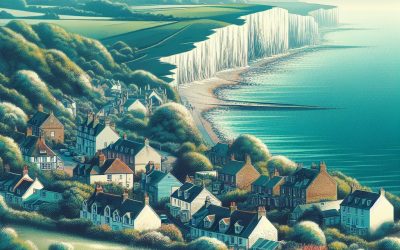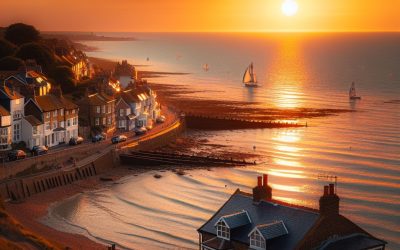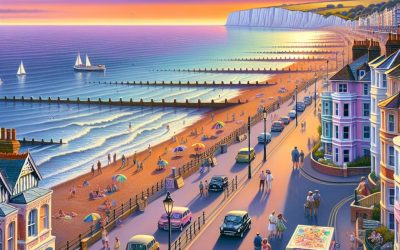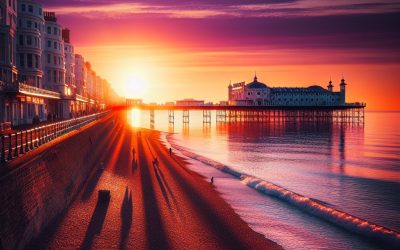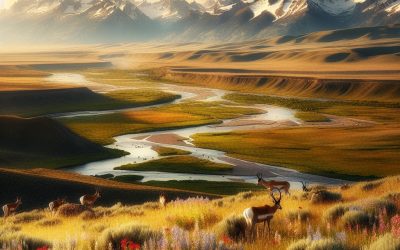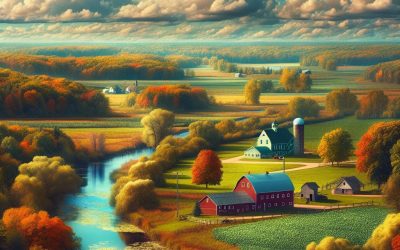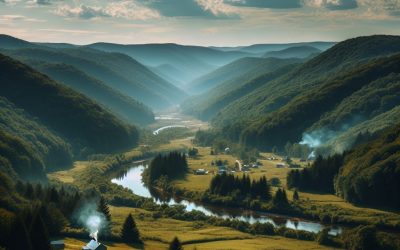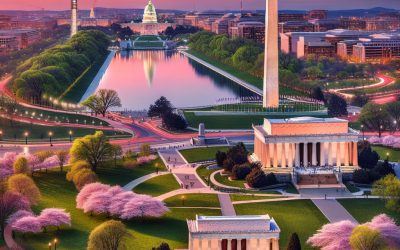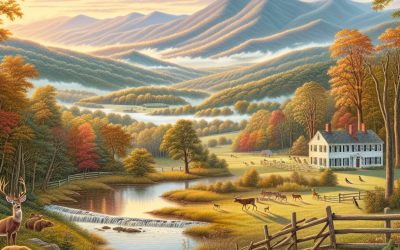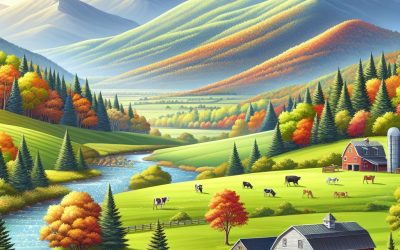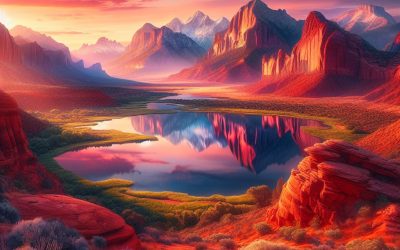Explore the World Through Geography, Natural Resources & Daily History
Clear, reliable and engaging guides that help you understand our planet — from UK geography education to global natural resources and On This Day history events.
Explore, discover, and learn about the wonders of our world! At Earth Site, we’re passionate about bringing geography, history, and science to life for curious minds of all ages. Whether you’re delving into historical events, uncovering the mysteries of the natural world, or seeking interactive resources, you’re in the right place.
Here, you can uncover the stories behind historical events, explore the natural wonders of our planet, and gain valuable insights into how the Earth’s systems shape our daily lives. From the towering peaks of mountain ranges to the far-reaching impacts of human innovation, we aim to make every topic both engaging and informative.
Start your journey of discovery with us today, and let’s make learning an adventure!
What We Cover
Earth Site brings together engaging and accessible educational content designed to help you understand the world, its history, and its natural systems.
🌍 Geography Education (UK & Worldwide)
We publish clear, easy-to-understand geography resources for students, teachers and curious learners. Our guides support geography education in the UK and cover physical geography, climate, ecosystems, population, and global development.
⛏️ Natural Resources & Environmental Geography
Explore detailed country profiles covering natural resources, mining, energy, geology and global environmental challenges. We show how nations manage minerals, water, land and ecosystems, and why these resources matter.
📅 On This Day in History
Every day has a story. Our On This Day history series features major events, anniversaries, traditions, and cultural milestones from around the world — with timelines, context, and fun facts.
TIMELINE
Seaford – East Sussex
Seaford, located in East Sussex, is a charming coastal town that offers a perfect blend of natural beauty, cultural attractions, and a vibrant community. This blog post aims to provide a comprehensive guide to Seaford, highlighting its history, stunning coastal location, natural beauty, iconic landmarks, cultural scene, local cuisine, shopping options, accommodation choices, transportation options, and exciting events and festivals throughout the year. Whether you are a history enthusiast, nature lover, art aficionado, foodie, or simply looking for a relaxing getaway by the sea, Seaford has something to offer for everyone. Summary Seaford is a historic town in East Sussex with a rich past dating back to the Roman era. The town’s coastal location offers stunning views of the English Channel and the Seven Sisters cliffs. Visitors can explore Seaford’s natural beauty by hiking along the South Downs Way or visiting the Seaford Head Nature Reserve. Seaford is home to iconic landmarks such as the Martello Tower and the Seaford Museum, as well as popular attractions like the Seaford Beach and Splash Point. The town’s cultural scene is vibrant, with events like the Seaford Folk Festival and the Seaford Christmas Magic Festival. Seaford’s local cuisine includes fresh seafood and traditional British dishes, with dining options ranging from cosy pubs to fine dining restaurants. Shopping in Seaford offers a mix of independent boutiques and high street chains, with a weekly market held on Thursdays. Accommodation options in Seaford include hotels, B&Bs, and self-catering cottages, with many offering sea views. Getting around Seaford is easy with a reliable bus service and a train station connecting the town to Brighton and London....
Bexhill-on-Sea – East Sussex
Bexhill-on-Sea is a charming coastal town located in East Sussex, England. Situated on the south coast, it is approximately 50 miles southeast of London. Bexhill-on-Sea is known for its beautiful beaches, historic landmarks, and vibrant community. The town has a population of around 40,000 people, with a mix of residents of all ages. Bexhill-on-Sea has a diverse demographic, with a range of ethnicities and backgrounds represented. The town has a strong sense of community and is known for its friendly and welcoming atmosphere. Bexhill-on-Sea enjoys a mild climate, with warm summers and cool winters. The town benefits from its coastal location, with sea breezes keeping temperatures pleasant during the summer months. The average temperature in Bexhill-on-Sea ranges from 5°C (41°F) in winter to 20°C (68°F) in summer. Rainfall is fairly evenly distributed throughout the year, with slightly drier summers and wetter winters. Summary Bexhill-on-Sea is a charming coastal town located in East Sussex. The town has a rich history, from its origins as a fishing village to its development as a Victorian resort. Visitors can enjoy a variety of attractions, including beaches, parks, and historic landmarks. Activities such as watersports, golfing, and cycling are popular in Bexhill-on-Sea. The town hosts a range of events and festivals, showcasing music, art, and culture. The History of Bexhill-on-Sea: From Fishing Village to Victorian Resort Bexhill-on-Sea has a rich history that dates back centuries. The area was originally settled by the Saxons and was primarily a fishing village. The fishing industry thrived in Bexhill-on-Sea for many years, with locals relying on the sea for their livelihoods. In the 19th century, Bexhill-on-Sea began to...
Hastings – East Sussex
Hastings, located in East Sussex on the south coast of England, is a town steeped in history and charm. With its roots dating back to the 8th century, Hastings has played a significant role in English history and continues to be a popular destination for tourists and history enthusiasts alike. In this blog post, we will explore the rich history of Hastings, delve into its famous Battle of Hastings, and discover the many attractions and landmarks that make this town a must-visit destination. Summary Hastings is a historic town located in East Sussex. The Battle of Hastings was a significant event in English history that took place in Hastings. Exploring Hastings Old Town provides a glimpse into the town’s rich history. Hastings Pier is a symbol of resilience and restoration after being destroyed by fire and rebuilt. The Fishermen’s Museum celebrates Hastings’ maritime heritage and the town’s fishing industry. The Battle of Hastings – A Turning Point in English History One of the most significant events in English history took place in Hastings in 1066 – the Battle of Hastings. This battle marked the beginning of the Norman Conquest of England and forever changed the course of English history. The battle was fought between the Norman-French army led by William the Conqueror and the English army led by King Harold The battle was a result of a disputed succession to the English throne. After the death of Edward the Confessor, both William and Harold claimed the throne. The battle took place on October 14, 1066, and resulted in a decisive victory for William and his Norman army....
Eastbourne – East Sussex
Eastbourne is a charming seaside town located on the south coast of England in East Sussex. With its beautiful beaches, stunning gardens, and rich history, it is a popular destination for tourists and locals alike. The town is known for its Victorian architecture, vibrant cultural scene, and outdoor activities. With a population of around 100,000 people, Eastbourne offers a mix of traditional seaside charm and modern amenities. Summary Eastbourne is a charming seaside town located in East Sussex. The town has a rich history, from its origins as a fishing village to its development as a popular Victorian resort. Visitors can enjoy a variety of attractions, including beaches, gardens, and cultural sites. Outdoor enthusiasts can take advantage of hiking, cycling, and watersports opportunities. Eastbourne also offers a range of shopping and dining options, as well as accommodation choices to suit all budgets. History of Eastbourne – From Fishing Village to Victorian Resort Eastbourne has a long and fascinating history that dates back to Roman times. Originally a small fishing village, it began to grow in the 19th century when it became a popular resort town for wealthy Victorians. The town’s development was further accelerated by the arrival of the railway in the mid-19th century, which made it more accessible to visitors from London. During World War II, Eastbourne was heavily bombed due to its proximity to the English Channel and its importance as a military target. Many buildings were destroyed or damaged, but the town managed to rebuild and recover in the post-war years. Today, remnants of the war can still be seen in some areas of Eastbourne,...
Brighton & Hove (Unitary Authority) – technically part of East Sussex
Brighton & Hove, located on the south coast of England, is a vibrant and diverse city that offers something for everyone. With its stunning beaches, lively arts scene, and rich history, it has become a popular destination for tourists and locals alike. Whether you’re looking to relax on the beach, explore the city’s cultural offerings, or indulge in its gastronomic delights, Brighton & Hove has it all. The city is known for its unique and bohemian atmosphere, attracting artists, musicians, and free spirits from all over the world. It has a reputation for being a place where creativity thrives and individuality is celebrated. From the iconic Brighton Pier to the bustling North Laine district, there is always something exciting happening in this vibrant coastal city. Summary Brighton & Hove is a vibrant coastal city with a rich history and thriving culture. From a fishing village to a tourist hotspot, Brighton & Hove has a fascinating past. The city is a creative hub with a thriving arts scene and many cultural attractions. Visitors can enjoy the beaches, pier, and other attractions in Brighton & Hove. The food and drink scene in Brighton & Hove is a gastronomic delight with many options to choose from. History of Brighton & Hove: From Fishing Village to Tourist Hotspot Brighton & Hove has a rich history that dates back centuries. Originally a small fishing village called Brighthelmstone, it began to grow in popularity as a seaside resort in the 18th century. The arrival of the railway in the 1840s further boosted its popularity, making it easily accessible to visitors from London and other parts...
State Of Wyoming
Wyoming, also known as the Equality State, is a landlocked state located in the western United States. It is the 10th largest state in terms of land area, but has the lowest population density in the country. The nickname “Equality State” was given to Wyoming because it was the first state to grant women the right to vote in 1869. The state motto, “Equal Rights,” further emphasizes Wyoming’s commitment to equality and justice. Wyoming holds great importance in American history. It played a significant role in the expansion and settlement of the American West. The state’s vast open spaces and natural resources attracted pioneers and settlers looking for new opportunities. Wyoming was also a key location during the era of cowboys and cattle drives, which has become an iconic part of American history and culture. Summary Wyoming is known as The Equality State due to its early adoption of women’s suffrage. Wyoming’s history includes a wild west past and becoming the 44th state in the US in 1890. The state’s geography includes both the Great Plains and the Rocky Mountains, offering diverse landscapes. Wyoming is home to a variety of wildlife, including bison, grizzly bears, and wolves. The state’s economy is heavily reliant on agriculture, mining, and energy industries. History of Wyoming: From Wild West to Statehood Before European exploration and settlement, Wyoming was home to various Native American tribes, including the Shoshone, Arapaho, Cheyenne, and Crow. These tribes lived off the land, hunting buffalo and other wildlife, and had a deep connection to the natural environment. European exploration of Wyoming began in the early 1800s with fur...
State of Wisconsin
Wisconsin, also known as the Badger State, is a state located in the Midwest region of the United States. It is bordered by Lake Superior and Michigan to the north, Lake Michigan to the east, Illinois to the south, and Iowa and Minnesota to the west. The state’s nickname, the Badger State, comes from the lead miners who first settled in the region in the early 19th century. These miners were known for living in temporary shelters called “badger holes,” which resembled the burrows of badgers. Wisconsin holds great importance in the United States for several reasons. Firstly, it is known for its rich history and contributions to American culture and politics. Secondly, it is home to several major industries, including agriculture, manufacturing, and tourism. Lastly, Wisconsin is renowned for its natural beauty, with numerous parks, lakes, and forests that attract visitors from all over the world. Summary Wisconsin is known as the Badger State due to early miners who lived in tunnels like badgers. Wisconsin has a diverse geography and climate, ranging from forests to farmland and from cold winters to hot summers. Wisconsin’s history includes Native American settlements, French and British colonization, and statehood in 1848. Wisconsin’s economy is driven by agriculture, manufacturing, and tourism, with cheese and beer being notable exports. Wisconsin is home to top universities like the University of Wisconsin-Madison and Marquette University. Geography and Climate of Wisconsin Wisconsin is located in the Midwest region of the United States and is bordered by Lake Superior to the north, Lake Michigan to the east, Illinois to the south, and Iowa and Minnesota to the...
State of West Virginia
West Virginia, located in the Appalachian region of the United States, is a state known for its natural beauty and rich history. It became a state in 1863 during the American Civil War and is often referred to as the “Mountain State” due to its stunning mountainous landscape. West Virginia is bordered by Pennsylvania to the north, Ohio to the northwest, Kentucky to the southwest, Virginia to the southeast, and Maryland to the northeast. The state is home to a diverse population with a unique culture that is influenced by Native American, African American, and European traditions. West Virginia’s natural beauty is one of its biggest attractions, with its rolling hills, lush forests, and picturesque rivers. The state is also known for its outdoor recreational activities such as hiking, camping, whitewater rafting, and skiing. Summary West Virginia is a state of natural beauty and rich history. The unique geography and climate of West Virginia make it a fascinating place to explore. West Virginia’s cultural heritage and traditions are worth discovering. The state offers great outdoor activities like hiking, camping, and adventure sports. West Virginia has a rich mining and industrial history, from coal to chemicals. Discovering West Virginia’s Unique Geography and Climate West Virginia’s geography is characterized by its diverse landscape, which includes mountains, rivers, and forests. The Appalachian Mountains run through the state, providing breathtaking views and opportunities for outdoor activities such as hiking and rock climbing. The state is also home to several national parks and forests, including the Monongahela National Forest and the New River Gorge National Park. West Virginia can be divided into several...
Washington State
Search Results Washington, also known as the Evergreen State, is located in the Pacific Northwest region of the United States. It is bordered by Oregon to the south, Idaho to the east, and Canada to the north. With a population of over 7 million people, Washington is the 13th most populous state in the country. The state’s nickname, the Evergreen State, comes from its lush green forests that cover a significant portion of its land. Summary Washington is known as the Evergreen State due to its lush forests and greenery. The state has a rich history, from Native American tribes to becoming the 42nd state in the US. Washington’s geography and climate are diverse, ranging from mountains to rainforests to deserts. The state’s economy is driven by industries such as agriculture, aerospace, and technology. Washington has a thriving culture and arts scene, with top universities and schools, and attractions for tourists of all interests. History of Washington: From Native American Tribes to Statehood Before European settlers arrived, Washington was home to numerous Native American tribes, including the Coast Salish, Chinook, and Makah tribes. These tribes lived off the land and had a deep connection to nature. European exploration of the area began in the late 18th century, with British and Spanish explorers making their way to the region. In the early 19th century, American fur traders and missionaries began to settle in Washington. The Oregon Treaty of 1846 established the border between the United States and Canada, placing what is now Washington under American control. The territory of Washington was created in 1853, and it became a state on...
State of Virginia
Virginia, also known as the Old Dominion, is a state rich in history, culture, and natural beauty. Located on the East Coast of the United States, Virginia is bordered by Maryland to the north, the Atlantic Ocean to the east, North Carolina and Tennessee to the south, and West Virginia and Kentucky to the west. With a population of over 8 million people, Virginia is the 12th most populous state in the country. Virginia has a diverse economy that includes industries such as technology, defense, agriculture, and tourism. The state is home to many prestigious universities and colleges, making it a hub for education and research. Virginia’s political landscape is also significant, as it has been a key battleground state in national elections. The state’s rich history is evident in its many historical sites and landmarks, while its natural beauty can be seen in its diverse geography that includes mountains, beaches, and rolling hills. Virginia’s arts and culture scene is vibrant and diverse, with a strong tradition of music, theatre, and visual arts. The state also has a proud sports legacy, with successful collegiate and professional sports teams. Looking towards the future, Virginia is committed to sustainability, innovation, and economic growth. The state aims to lead in areas such as renewable energy, technology, and healthcare. With its unique offerings and rich heritage, Virginia is a state worth exploring. Summary Virginia has a rich history dating back to the early settlements, including the founding of Jamestown in 1607. The state’s geography is diverse, featuring mountains, beaches, and rolling hills, making it a popular destination for outdoor enthusiasts. Virginia’s economy is...
State of Vermont
Vermont, also known as the Green Mountain State, is a small state located in the northeastern part of the United States. It is bordered by Massachusetts to the south, New Hampshire to the east, New York to the west, and Canada to the north. Vermont is known for its stunning natural beauty, with its rolling hills, picturesque mountains, and charming small towns. The state is often referred to as the Green Mountain State due to its abundance of lush green forests and mountains. Vermont has gained a reputation for being environmentally conscious and sustainable. The state has implemented various initiatives to protect its natural resources and reduce its carbon footprint. Vermont was one of the first states in the country to ban single-use plastic bags and has made significant investments in renewable energy sources such as wind and solar power. The state’s commitment to environmental stewardship has made it a leader in sustainability efforts. Summary Vermont is known as The Green Mountain State due to its stunning natural beauty. The state’s geography and climate make it a popular destination for outdoor enthusiasts. Vermont has a rich history dating back to the first inhabitants and continues to thrive in modern times. The state’s agriculture industry is a major player in the farm-to-table movement. Vermont’s unique culture is reflected in its art, music, and literature. Vermont’s Geography and Climate: A Natural Wonder Vermont’s geography is characterized by its diverse landscape, which includes the Green Mountains, Lake Champlain, and numerous rivers and lakes. The Green Mountains run north-south through the center of the state and offer breathtaking views and opportunities for outdoor...
State of Utah
Utah, also known as the Beehive State, is a landlocked state located in the western United States. It is bordered by Idaho and Wyoming to the north, Colorado to the east, Arizona to the south, and Nevada to the west. Utah is known for its stunning natural beauty, with diverse landscapes that include mountains, deserts, and canyons. The state is home to several popular attractions and activities, making it a must-visit destination for outdoor enthusiasts and nature lovers. One of the most famous attractions in Utah is the Great Salt Lake, a large saltwater lake located in the northern part of the state. The lake is known for its unique features, including its high salt content and the presence of brine shrimp. It is also a popular spot for birdwatching and water sports such as sailing and kayaking. Another popular destination in Utah is its national parks. The state is home to five national parks, including Arches National Park, Zion National Park, Bryce Canyon National Park, Canyonlands National Park, and Capitol Reef National Park. These parks offer breathtaking landscapes, hiking trails, and opportunities for camping and wildlife viewing. Summary Utah is known as the Beehive State and is located in the western United States. The state has a diverse geography and climate, ranging from deserts to mountains and experiencing all four seasons. Utah has a rich history, with Native American tribes living in the area for thousands of years before it became a state in 1896. The Great Salt Lake is a unique natural wonder in Utah, known for its high salt content and pink hue. Utah is home...
